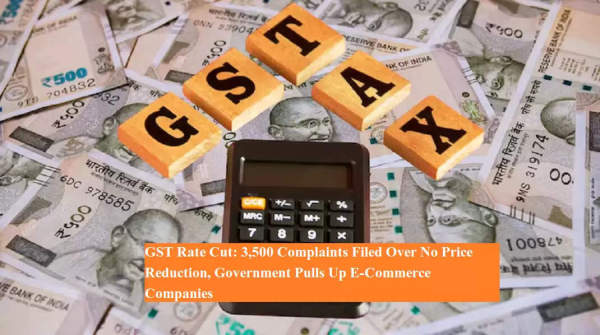
The Central Board of Indirect Taxes and Customs (CBIC) has received a flood of consumer complaints after the recent Goods and Services Tax (GST) rate cut came into effect. Despite the government slashing GST on multiple categories from September 22, 2025, consumers across India are reporting that many businesses, especially e-commerce operators, have not passed on the benefit of reduced rates.
According to official data, over 3,500 complaints have been lodged with the National Consumer Helpline in just one week. On average, more than 400 complaints are being received daily, with the highest number coming from Uttar Pradesh, Bihar, Delhi, Madhya Pradesh, and Rajasthan.
While the government intended the GST reduction to ease the financial burden on consumers, the impact has not been widely felt. Complaints reveal that:
Food and retail products top the list of grievances.
Auto and consumer durables buyers say prices have not been adjusted.
E-commerce platforms continue to charge higher prices, ignoring the revised GST slabs.
Consumers also call the helpline to seek clarity on the new GST rates. Authorities are ensuring that each complaint is registered, and a complaint number is issued to consumers for tracking.
For those still facing the issue, complaints can be filed via:
National Consumer Helpline Number: 1915
WhatsApp Helpline: 8800001915
According to sources, the government has taken a strict stance against E-Commerce Operators (ECOs) for failing to reflect the GST rate cuts in their listed prices. The Ministry has already issued warnings and increased monitoring of online marketplaces.
Officials confirmed that in several cases, prices of goods on leading e-commerce platforms remained unchanged even after September 22, when the revised GST rates came into force. This has triggered heightened scrutiny, with ECOs now directly on the government’s radar.
The monitoring exercise covers all product categories, but most complaints so far have been linked to FMCG items and packaged food products, which consumers claim remain unaffected by the tax reduction.
The government is actively comparing pre- and post-GST cut prices. Authorities are closely tracking how prices were listed before September 22 and what they stand at after implementation. Any violation—where businesses pocket the tax benefit instead of passing it on to buyers—will attract regulatory action.
A senior official highlighted:
“GST rate cuts are meant for consumers. If companies, especially e-commerce operators, are found retaining the benefit, strict action will follow.”
The monitoring is not limited to online platforms; retail chains and manufacturers are also being tracked to ensure compliance.
For now, the government is urging consumers to stay vigilant and immediately report any instance where they feel deprived of the GST cut benefits. By filing complaints through the helpline, consumers ensure their concerns reach CBIC for further investigation.
The GST cuts were intended to bring relief in categories such as food, FMCG, automobiles, and consumer goods. However, unless companies comply, the government may consider more stringent actions against violators.
The GST rate cut was expected to ease household budgets, but the surge of complaints indicates that the benefit has not been fully passed on. With over 3,500 complaints in a week, the spotlight is firmly on e-commerce companies and retailers. The government has made it clear: failure to comply with revised tax rates will not be tolerated, and monitoring will continue until consumers receive their rightful benefit.